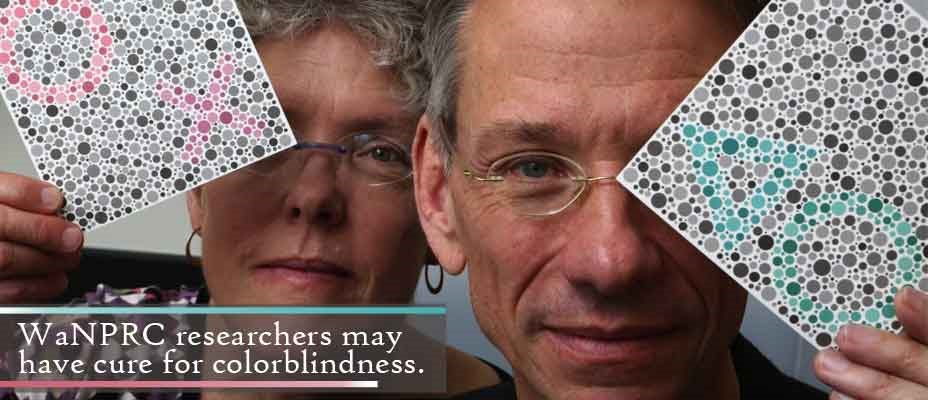
For the more than 10 million Americans with colorblindness, there’s never been a treatment, let alone a cure, for the condition that leaves them unable to distinguish certain hues. Now, for the first time, Jay and Maureen Neitz of the University of Washington have teamed with a California biotech firm to develop what they say may be a solution: a single shot in the eye that reveals the world in full color.
The husband-and-wife scientists, who have studied the vision disorder for years, have arranged an exclusive license agreement between UW and Avalanche Biotechnologies of Menlo Park. Together, they’ve found a new way to deliver genes that can replace missing color-producing proteins in certain cells, called cones, in the eyes.
“I don’t think there’s any question that it will work,” said Maureen Neitz, 57, a UW professor of ophthalmology.
New Colorblindness Treatment
The new treatment — which may be tested in humans within two years — could be a boon for the 1 in 12 men and 1 in 230 women with color-vision deficiency.
The trouble occurs when people are born without one or more of the three types of color-sensing proteins normally present in the cones of the retina. The most common type is red-green colorblindness, followed by blue-yellow colorblindness. A very small proportion of the population is completely colorblind, seeing only shades of gray.
Because they can’t perceive certain colors, they see hues in muted or different shades than people with normal vision.
Brian Chandler, 38, of Seattle, said he first noticed he was colorblind in seventh grade, when he started getting C’s and D’s on drawings in science class.
“I was coloring green stuff brown and brown stuff green,” recalled Chandler, a traffic-safety engineer.
Read entire article from Seattle Times newspaper.